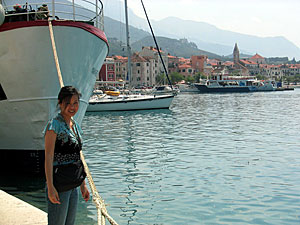 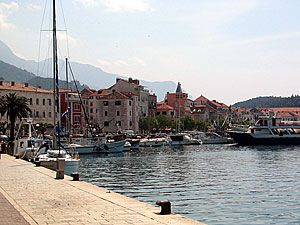
Makarska |
| |
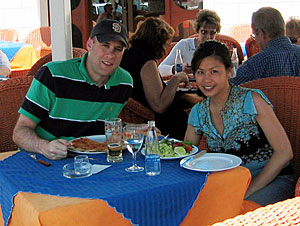
For lunch, Jason had a Margherita pizza (thin-crust and fresh as usual) and for me, it was a delicious salad! | 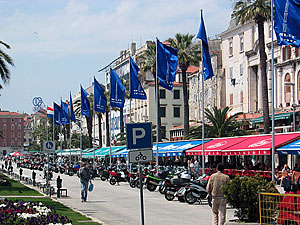
Split - the cultural and economic hub of Central Dalmatia.
|
| |
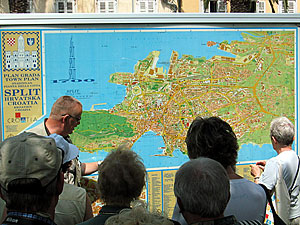
Our trip guide, Brane (pronounced Bron-é), gave us an introduction to the city.
| 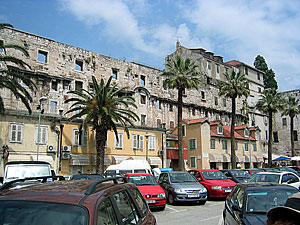
A blending of old and new. In 295 AD, the Roman emperor Gaius Valerius Aurelius Diocletianus built his palace in Split. Within the walls of Diocletian's huge palace is a bustling city, where people today live and work in the structures that were built 1,700 years ago. |
| |
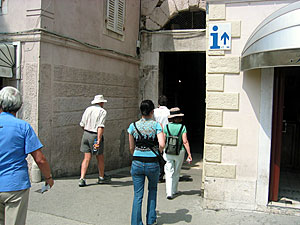
We entered the Palace through the basement, which is actually the best preserved part of the palace. We couldn't view the upper floors as they were inhabited by the city's residents! | 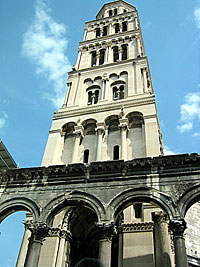
The church within the city walls.
|
| |
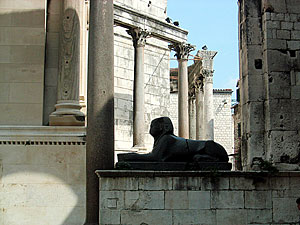
After seeing the Sphinx in Egypt, Diocletian had two smaller duplicates made for his palace. | 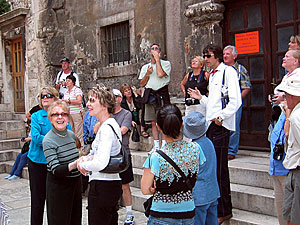
Our city guide used to play basketball for Croatia's professional team. |
| |
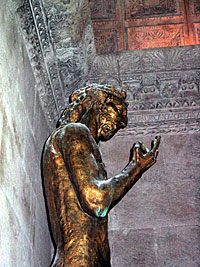
A bronze statue made in the 20th century.
| 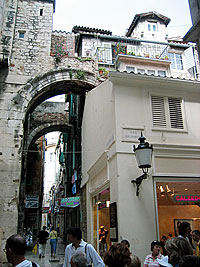
Another mix of old and new. The floors in this modern bank are the original stone floors of the old city (in other words, it's basically four walls and a roof resting on the ground). It's strange because modern ergonomical chairs rest atop ancient Roman drainage systems. |
| |
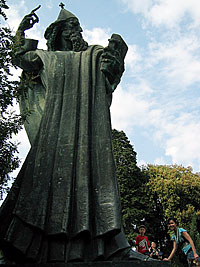
This status looks like Merlin, but it's actually of a bishop. You're supposed to rub its toe and make a wish. | 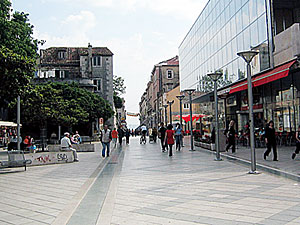
Modern city street in Split and site of the first McDonalds we saw in Croatia.
|
| |
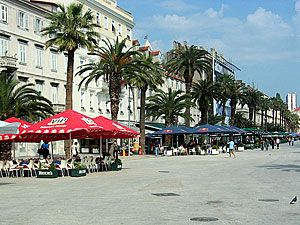
More sidewalk cafes.
|
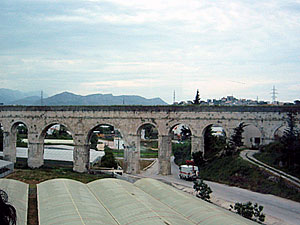
As we left Split, we drove by the ancient Roman aqueduct system that brought water to the Diocletian Palace - amazing engineering.
|
| |
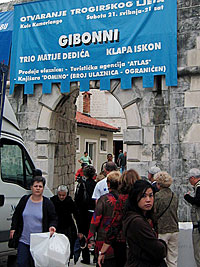
Entering the old city walls of Trogir, a center for artistic activities.
|
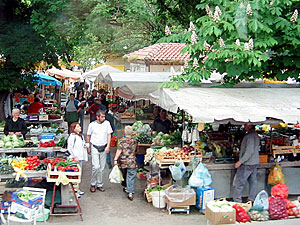
It had the cutest open-air market.
|
| |
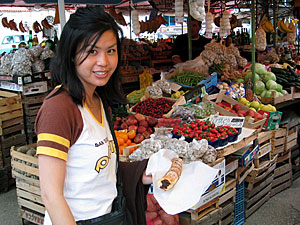
One of the best things about Croatia? Bread, gelatto and pastries EVERYWHERE! Here, a chocolate pastry roll.
|
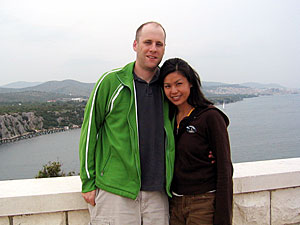
|
| |
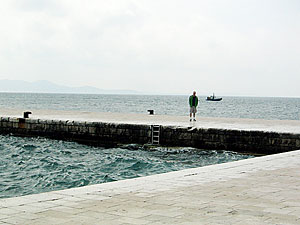 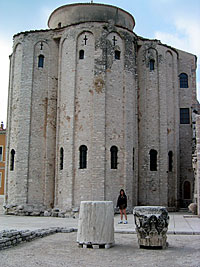
We also made a stop in Zadar, the oldest Slavic city on the Adriatic. On the right, St. Donat Church. |